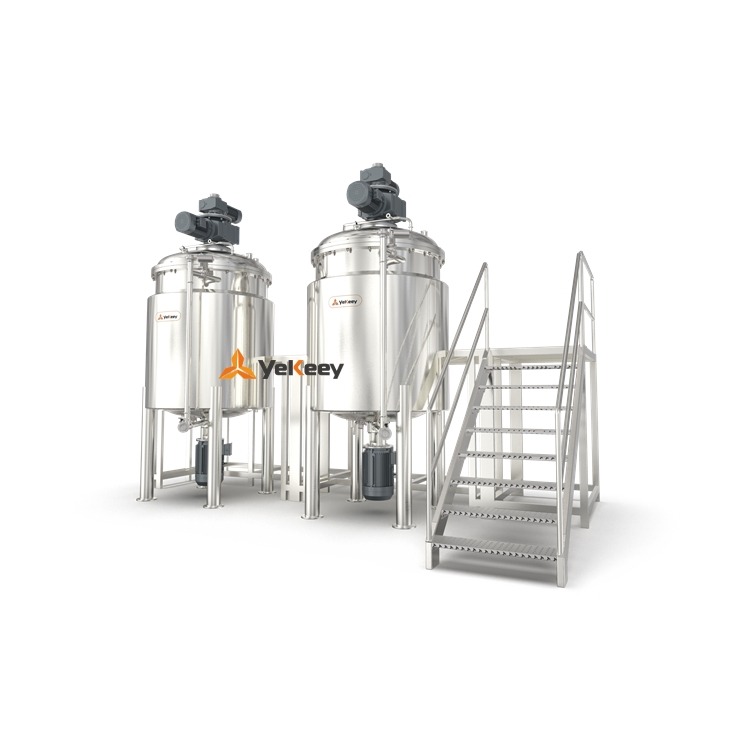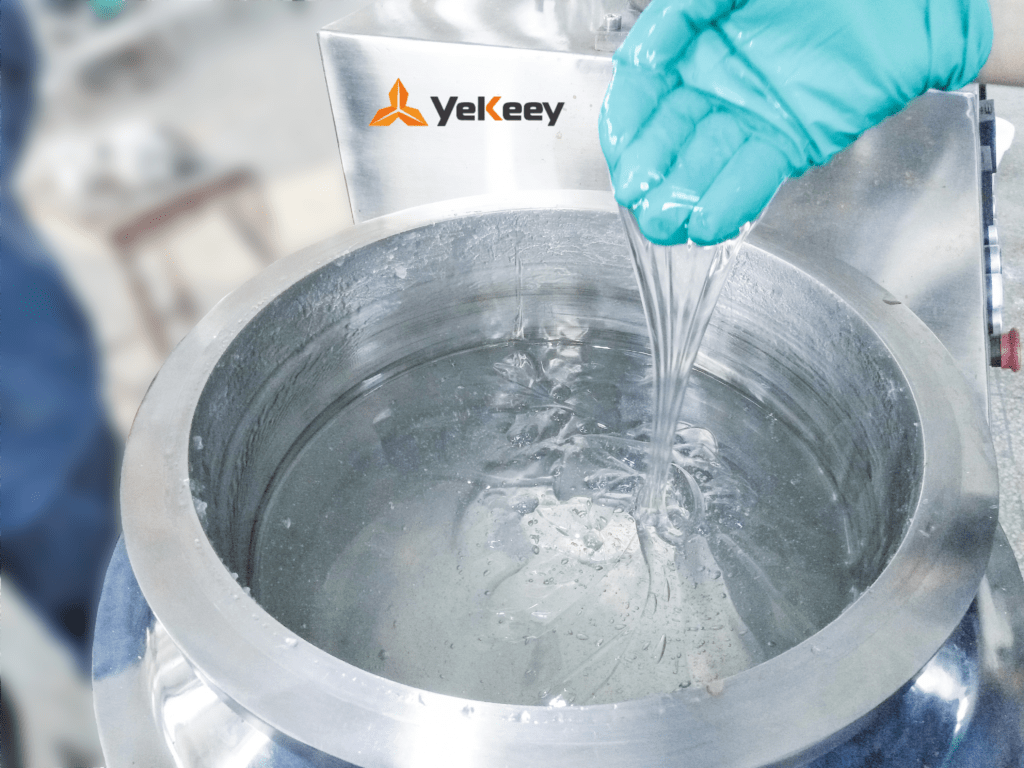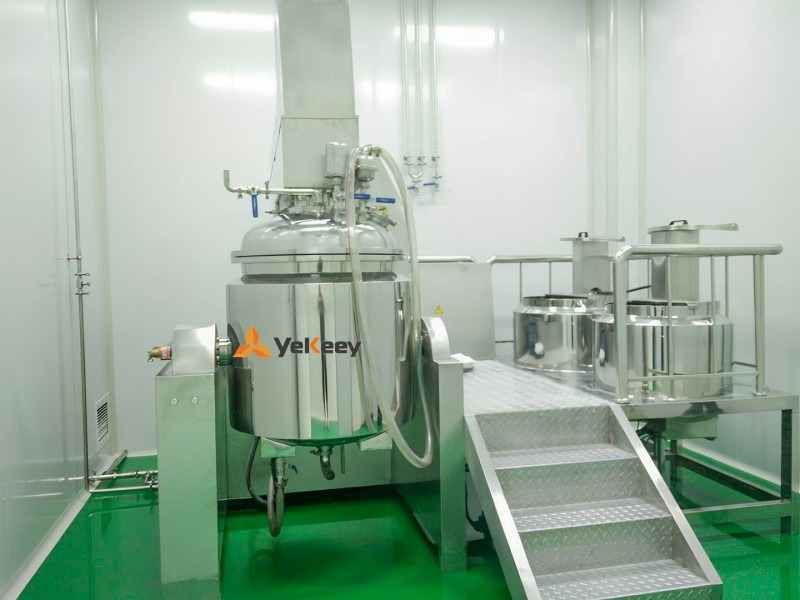-
What is an industry mixer?
- Industry mixer is a mechanical equipment mainly used for stirring and mixing various substances.
- It is usually composed of an electric motor, rotor, container, and other parts, used to mix dry powder, paste, liquid and other materials to achieve a uniform mixing effect. Mixers can also be used in a series of processes such as high shear treatment, grinding, dispersion, and emulsification.
- Different types of industrial mixers have different shapes and materials, and their functions and uses are also different. They can be selected and configured according to different needs.
-
What is the working principle of the industry mixer?
Industry mixers generate eddy currents and convective motion through rotating mixers, thereby achieving mixing between different substances.Specifically, the working principle of industrial mixers can be explained through the following aspects:
(1) The stirring impeller rotates under the drive of the motor, producing a swirling jet of liquid when stirred. Using shear stress along the surface of the jet to mix, the liquid outside the flow field is stirred by friction.
(2) The industrial mixer operates through the mixing head of multiple interactive mixing blades, which can be directly placed on the ground for high-speed rotation. At the same time, the mixer can be manually controlled to move 360 degrees at any angle and distance, thereby achieving three-dimensional high-speed three-dimensional mixing.
(3) The industrial mixer mainly consists of a mixer and a mixer pot. A mixer typically consists of one or more blades, which can be fixed or adjustable. A mixer pot is a container that contains substances, usually in a cylindrical shape, and has an outlet for discharging the mixture.
(4) The five basic parameters that describe an industrial mixer are shaft power, blade discharge capacity, pressure head, blade diameter, and stirring speed. Under certain power and blade form, the discharge volume and pressure head of the blade can be adjusted by changing the matching of blade diameter and speed.
(5) Shear stress is the true cause of bubble dispersion and droplet breakage in stirring applications. From the perspective of stirring mechanism, it is precisely due to the existence of fluid velocity difference that the layers of the fluid mix with each other. Therefore, in the industrial stirring process, sufficient shear rate is required to ensure the collision of micro clusters with each other.
-
What is the use of industry mixer?
(1) Food industry: used for mixing and stirring in food processing, such as the preparation of flour, syrup, sauces, cake batter, etc. Industrial mixers can effectively mix different ingredients evenly, improving the quality and taste of products.
(2) Chemical industry: Industrial mixers play an important role in chemical processes. They are used for mixing drugs, dyes, pigments, solvents, and other chemicals. By stirring and mixing, sufficient contact and uniform distribution of reactants can be achieved, thereby improving reaction efficiency and product quality.
(3) Pharmaceutical industry: Industrial mixers are used for the mixing, dissolution, and emulsification processes of preparing drugs. They can evenly mix different pharmaceutical ingredients and excipients together, ensuring the quality and stability of the drug.
(4) Construction industry: Industrial mixers are used to prepare building materials such as concrete, mortar, and gypsum. They can mix different raw materials evenly, improving the strength and stability of building materials.
(5) Mining and Metallurgical Industry: Industrial mixers are used for processes such as ore crushing, leaching, and flotation. They can mix and stir ores and chemical agents, promoting the separation and extraction process of metal minerals.
(6) Wastewater treatment industry: Industrial mixers are used for mixing, stirring, sedimentation, filtration, etc., such as treating domestic sewage, industrial wastewater, sludge, etc.
(7) Energy industry: Industrial mixers are used for mixing fuels, stirring crude oil, etc., such as in industries such as petroleum, natural gas, and chemical engineering.
-
How to maintain the industry mixer?
(1) Regular inspection and cleaning of equipment: After long-term operation, the mixing equipment will accumulate a certain amount of dirt and foreign objects, which can affect the normal operation of the equipment and even cause equipment damage. Therefore, it is necessary to regularly inspect and clean the equipment, including cleaning the mixing shaft, mixing arm, mixing blade and other components. When cleaning, it is strictly prohibited to use a hammer to directly remove residual mixture, as violent impact may cause the mixing blade to break.
(2) Regular replacement of lubricating oil and seals: Lubricating oil and seals are important components to ensure the normal operation of industrial mixers. It is necessary to regularly check the condition of the lubricating oil and replace it, as well as regularly replace the sealing components, to ensure the normal lubrication and sealing effect of the equipment.
(3) Regular inspection and maintenance of motors and reducers: Motors and reducers are the core components of industrial mixers, and their operational status directly affects the mixing effect and lifespan of the equipment. Regular inspection and maintenance of the motor and reducer are required, including cleaning the surface of the motor and reducer for dust and dirt, checking the operation status of the motor and reducer to ensure their normal operation.
(4) Pay attention to the operating status of the equipment: During the operation of the equipment, it is necessary to constantly monitor the operating status of the equipment, such as the sound of the motor and reducer, and the vibration of the equipment. If any abnormalities are found in the equipment, it should be stopped for inspection in a timely manner to eliminate the fault.
(5) Safety protection measures: In order to ensure the safe operation of industrial mixers, it is necessary to equip them with comprehensive safety protection measures, such as installing protective covers for equipment and setting safety limits.
(6) Maintenance of easily worn parts: For easily worn components such as blades, bearings, shaft seals, etc., they need to be replaced regularly according to their frequency of use and working conditions.










Your website is awesome! I’m genuinely enjoying the insightful content and the cool design—it feels like a user-friendly playground. Kudos for your dedication! Let’s chat and brainstorm some fantastic ideas.
Thanks I have just been looking for information about this subject for a long time and yours is the best Ive discovered till now However what in regards to the bottom line Are you certain in regards to the supply
helloI like your writing very so much proportion we keep up a correspondence extra approximately your post on AOL I need an expert in this space to unravel my problem May be that is you Taking a look forward to see you
Normally I do not read article on blogs however I would like to say that this writeup very forced me to try and do so Your writing style has been amazed me Thanks quite great post